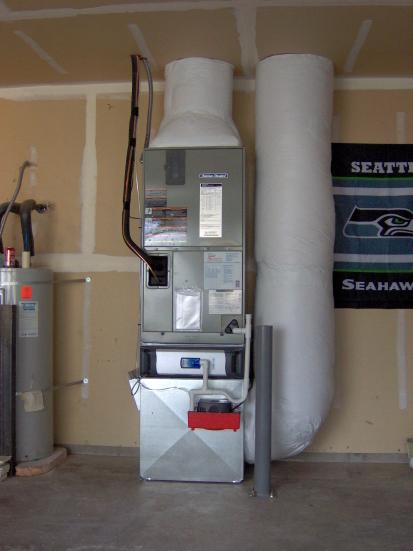Top HVAC Portland technicians ready to install your system
Top HVAC Portland technicians ready to install your system
Blog Article
The Ultimate Guide to Heating System Setup for a Cozy Home
Heater installation is a critical aspect of keeping a comfortable home atmosphere, particularly throughout the chillier months. As you take into consideration these aspects, the question continues to be: what steps can you take to ensure your furnace offers you well for years to come?
Sorts Of Heaters

Gas heating systems are the most usual option due to their performance and lower operational expenses. They use gas or propane, giving quick home heating and consistent efficiency, making them excellent for chillier climates.
Electric heaters, while generally easier to mount and maintain, have a tendency to have higher functional costs. They are commonly preferred in areas where gas solution is inaccessible or for homes with existing electrical facilities.
Oil furnaces, though much less typical today, continue to be a viable choice in particular areas. They burn heating oil, which can be helpful throughout chillier months, but their dependence on oil shipment poses potential difficulties.
Additionally, there are high-efficiency models available across these kinds, which can considerably reduce power usage and energy expenses - furnace installation. Ultimately, comprehending these heater types will aid home owners select a system that lines up with their heating requires, spending plan, and power preferences
Picking the Right Size
Selecting the suitable size for a furnace is essential to ensuring ideal performance and energy effectiveness. A small heating system will certainly have a hard time to maintain comfortable temperatures throughout the cool months, resulting in enhanced damage, greater power costs, and potential system failing. On the other hand, an oversized heating system might cycle on and off too frequently, resulting in inefficient home heating and uneven temperature level circulation within the home.
To identify the proper furnace size, a computation called the Guidebook J load estimation should be done. This process assesses various elements, consisting of the square video footage of the home, insulation degrees, home window sizes, and regional climate problems. This extensive evaluation makes certain that the heating system fulfills the details heating demands of the area.

Installment Refine Summary
In regards to materials, you will need ductwork, insulation, and securing tape to make sure ideal airflow and power performance - furnace installation. It is additionally vital to have a new furnace filter handy, along with venting materials, such as PVC pipeline or steel flue, relying on the type of heater being set up
Safety and security devices, including gloves, safety glasses, and a face mask, is additionally important to secure versus dirt and particles during installation. Having all these devices and products conveniently available not only enhances the process yet likewise improves the safety and efficiency of the heater setup.
Upkeep Tips for Long Life
To ensure the long life of your furnace, it is crucial to apply a regular upkeep schedule that deals with essential parts of the system. Beginning by replacing or cleansing the air filter each to 3 months, as a clogged filter can restrict air flow and lower efficiency. In addition, examine and cleanse the blower setting up to stop dust buildup that can impede efficiency.
Next, examine the thermostat settings and alter if needed to guarantee accurate temperature policy. Examine the ductwork for leakages or clogs, as this can lead to energy loss and uneven heating. Regularly oil the motor additional info and bearings according to the manufacturer's suggestions to reduce wear and tear.
Specialist assessments must take place annually, where a certified technician can examine the furnace's overall problem, check for gas leaks, and make certain that safety features are working appropriately. Lastly, take into consideration mounting a programmable thermostat to maximize energy use and maintain regular home temperatures. By adopting these maintenance methods, you can enhance your furnace's efficiency, prolong its life expectancy, and eventually take pleasure in a comfy and comfortable home atmosphere.
Conclusion

Report this page